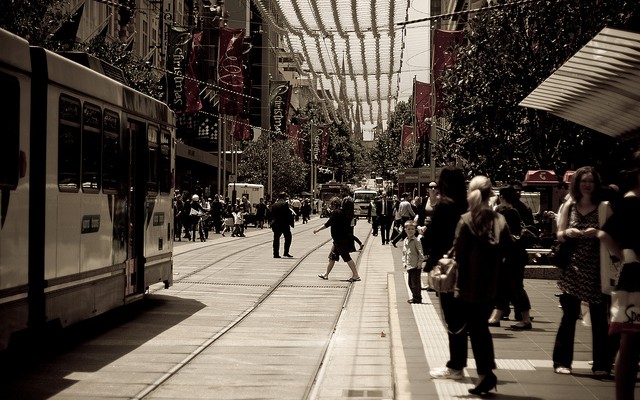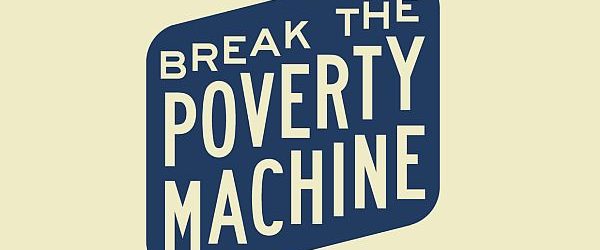In the wake of the shocking and tragic events in Bourke Street, Melbourne in January, Daniel Andrews’ state government is under pressure to review and reform the bail system after the news that the man allegedly responsible, Dimitrious Gargasoulas, had been granted bail a few days before. Andrews has announced the introduction of ‘Night Courts’ for violent offences, as well as a review of the bail system in Victoria, engineered to tighten up bail eligibility.
But the knee-jerk response of bail reform will not deal with the structural and systemic problems that give rise to incidents of violence, particularly since the bail system already works in ways that pre-emptively remand people by virtue of the risk they pose. As with the parole reforms that came about after Adrian Bayley’s offending, reform developed in response to individual and exceptional events will only increase the number of significantly disadvantaged people on remand. Increased rates of imprisonment will create social, economic and human costs for the community, not make it safer. These punitive law changes highlight the inadequacies of the systems we have in place to respond to family violence and support people with acute mental health needs.
The bail system in Victoria
Bail is seen as one way to prevent arbitrary detention of people in custody before their cases have been heard. Remand imprisonment was originally turned to as a last resort for exceptionally serious offences, but is increasingly being used to detain people who suffer at the intersections of disadvantage. Remand prisoners in Victoria now make up 29% of the total prison population.
Under the current system, alleged offenders are entitled to bail unless the prosecution can prove they are at an unacceptable risk of (re)offending, failing to attend court, interfering with witnesses or endangering the safety and welfare of the public. However, an increasingly long list of offences comes under what is called the reverse onus rule, where the bail applicant must demonstrate that their detention in custody is not justified or in more serious cases, that ‘exceptional circumstances’ must exist for bail to be granted. Offences falling into this category range include serious offences such as trafficking in drugs, breaches of domestic violence orders and murder, but they have also been amended more recently to include breach of bail offences.
With this in mind, the most likely way in which bail eligibility could be tightened is by adding more offences to the category of ‘reverse onus’, and the premier has signalled that this option will be reviewed.
Unprecedented prison population growth
In 2013, changes to the Bail Act made breaching bail a reverse onus offence, thus increasing the test for bail. These changes, as well as shifts in parole eligibility and sentencing, have seen an unprecedented growth in prisoner numbers over the last four years. According to the Sentencing Council of Victoria, the unsentenced prison population increased by 65% since 2014, and by 154% in the last decade. The Magistrates’ Court of Victoria have reported a 90% increase in bail applications over the last five years.
Our prisons are filled to bursting point as a result, with communal areas being turned into makeshift rooms, a reliance on ‘shipping container’ cells, an increase in double bunking, using police cells to hold prisoners for prolonged periods of time, and the release of remand prisoners due to lack of space. Prisoners are frequently not brought to court for scheduled hearings, due to a lack of room in courtroom cells.
There is much evidence to show that increased prison populations do not make us safer. What these policies do is disappear the range of problems associated with disadvantage, mental health, lack of housing, poverty and family violence into the prison system. Sadly, the trauma, social isolation and further institutionalisation of people that is compounded through imprisonment will re-emerge in the community upon release.
The 2014 Ombudsman’s report into deaths and harms in custody found that overcrowding significantly increases the likelihood of both. Remand prisoners are unable to access programs inside the prison and are more frequently placed in substandard conditions. Of particular concern is the Melbourne Custody Centre (MCC) below the courts precinct in the Melbourne CBD. Here, prisoners are placed six to a cell in an environment with no natural light and substandard filtration. In these environments, physical and sexual assault, self-harm and illness are much more likely to occur. Despite policy dictating a maximum two-week stay in the MCC (because of the conditions), it is clear that many spend far longer, due to insufficient beds elsewhere. For some time, commentators have observed that crowded and substandard conditions create a lack of safety and will increase the likelihood of stress-led confrontations and riots. In 2015, the entire Metropolitan Remand Centre was placed into lockdown after riots with low risk (unsentenced) prisoners sent to the maximum-security Barwon Prison due to widespread damage.
Criminalising disadvantage
Moreover, bail and parole changes have not affected the Victorian population equally. Indigenous peoples and women are two groups that have experienced increases at an alarming rate. Indigenous women, in particular, are the fastest growing group in Victorian prisons. Indigenous women are frequently denied bail due to perceived unmet ‘needs’ in the community, and then released without conviction. Rather than redress the lack of community support, these short periods of imprisonment only ensure continued disadvantage.
If we decrease bail eligibility, it is not the Adrian Bayleys or Dimitrious Gargasoulas’ of the world who will experience the repercussions. Rather, eligibility for bail is based on whether a person has safe and secure accommodation, employment, financial security, access to rehabilitative programs and a support network. Even cultural needs can be redesignated as a risk against bail, with Indigenous peoples and some migrants being less likely to receive bail, as they are perceived to have more ‘culturally specific needs’ that must be accounted for.
In fact, being deemed an ‘unacceptable risk’ under the Bail Act is more likely to relate to a lack of access to support than a potential for violent offences. Those who receive bail are increasingly those with access to social goods, while homeless people, people with disabilities, people with mental illness, and those with unaddressed drug and alcohol dependency issues are contained without receiving any assistance. For particularly ‘high risk’ offences, such as domestic violence and drug trafficking, people are more likely to receive bail if they have access to a ‘surety’: an amount ranging from $1,000 to over $100,000, which will be forfeited if a person does not show up to court. Obviously, many people do not have access to these kinds of funds.
When we make it harder to receive bail, we are not protecting the public. Rather, we are furthering the disadvantage of already marginalised groups or forcing them into dangerous situations. In some cases, women are less likely to be granted bail because of the belief that they will be safer in prison than sleeping rough or with family members. This analysis could not be further from the truth, as women on remand cannot access services, and are often damaged by their imprisonment. Recent Victorian research found that, in prison, women lost their access to children, housing and employment and post-prison, they suffered high rates of death, illness and harm.
Prisons create violence
Putting people in prison does not reduce the problems of violence in our communities; in fact, people in prison experience higher levels of violence than the general community, and frequently leave prison traumatised and without access to necessary services.
Historically, when community safety is threatened, people have looked to imprisonment and criminal justice as the solution. But such an approach is short-sighted and creates more problems than it solves. To truly work to reduce harm and violence in communities, we need to invest long-term in social infrastructure such as public housing, family violence support and prevention, mental health services, healthcare services, welfare support and education. The tragic events of Bourke Street put us at a crossroads: do we take the road of expensive, self-defeating prisons or the path of community investment and violence prevention?
Image: ‘Bourke Street’ / John Trif






